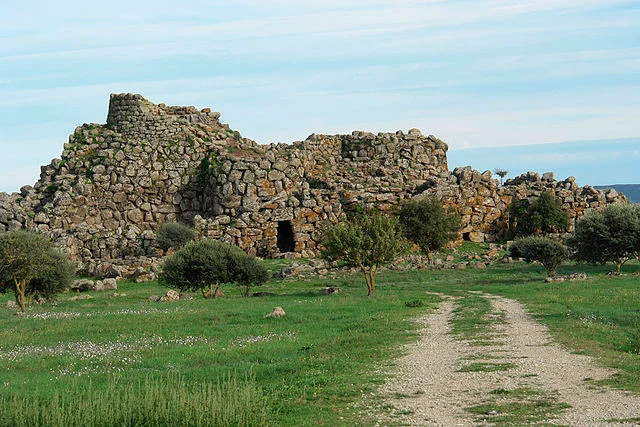Nuraghe Arrubiu is one of the largest and best-preserved nuraghes in Sardinia, Italy. Built around the 14th century BC, this impressive structure showcases the Nuragic civilization’s architectural skill. Its unique design and historical significance make it a central site for understanding Sardinia’s ancient past.
Get your dose of History via Email
Location and Structure
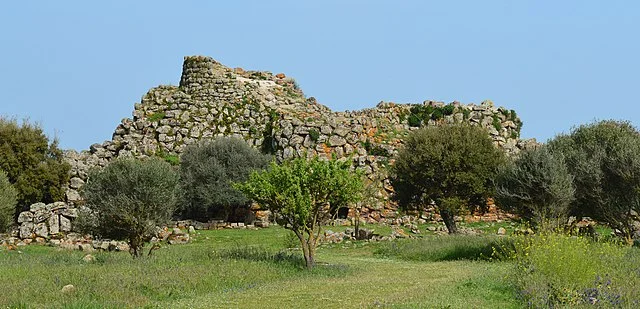
Nuraghe Arrubiu is located near Orroli, a town in central Sardinia. Known as the “Red Nuraghe” due to the color of the local basalt stone, this site covers a vast area, approximately 5,000 square meters. The main tower, which once reached 30 meters in height, now stands around 16 meters due to centuries of erosion. Arrubiu is a multi-towered complex, featuring a central tower surrounded by five smaller towers and an additional outer bastion with seven more towers.
The central tower, or mastio, forms the core of Nuraghe Arrubiu. Inside, visitors find a labyrinth of chambers connected by narrow corridors. The central tower was once divided into three levels, with the ground floor housing ritual and storage areas. The structure around the main tower includes a series of fortified walls and additional towers, which further emphasize its defensive nature.
Architectural Significance
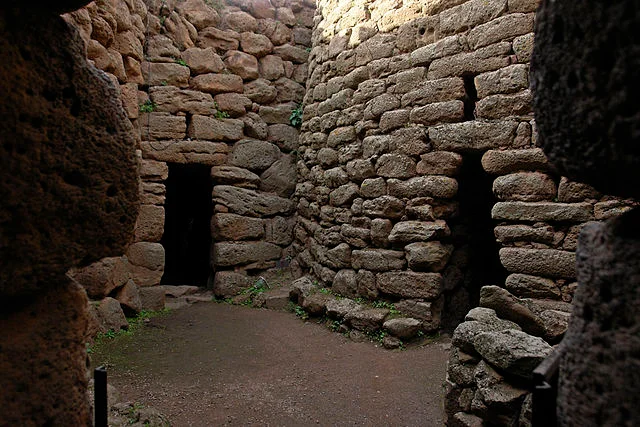
Nuraghe Arrubiu’s architecture reflects the advanced construction methods of the Nuragic people. Builders used basalt stone blocks, skillfully cut and stacked without mortar. This technique, known as cyclopean masonry, relied on precisely fitted stones to maintain stability. Large internal spaces, corbelled domes, and staircases reveal a high level of engineering expertise. The walls in the main tower’s interior are thick, providing insulation and protection from the elements.
The site’s complex design is unique among Sardinian nuraghes, which generally feature a single tower. Nuraghe Arrubiu’s multi-tower layout suggests the settlement may have held regional importance, possibly functioning as a community center or a defensive fortress.
Historical Context
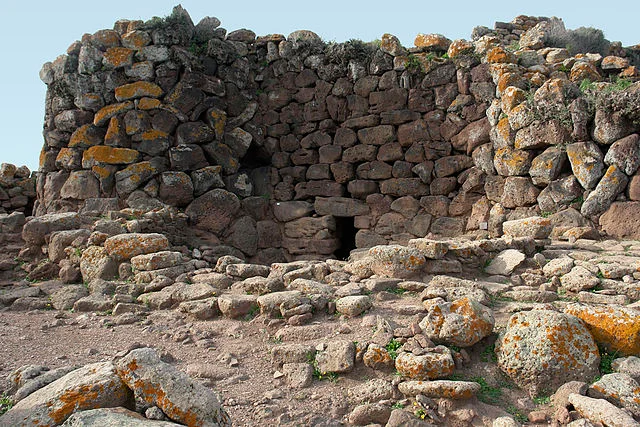
The Nuragic civilization thrived from around 1800 BC until the Roman conquest in 238 BC. During this period, they constructed thousands of nuraghes across Sardinia. These structures served various purposes, including defense, storage, and religious rituals. Archaeologists believe that Nuraghe Arrubiu was a major hub for these activities, evidenced by the tools, pottery, and religious artifacts found on-site.
Nuraghe Arrubiu’s construction aligns with the peak of the Nuragic civilization’s development. By 1400 BC, complex societies had emerged in Sardinia, marked by extensive trade networks, especially with Mycenaean Greece and the Eastern Mediterranean. Arrubiu may have served as a storage and distribution center for these goods, further supporting its importance in the region.
Excavations and Discoveries
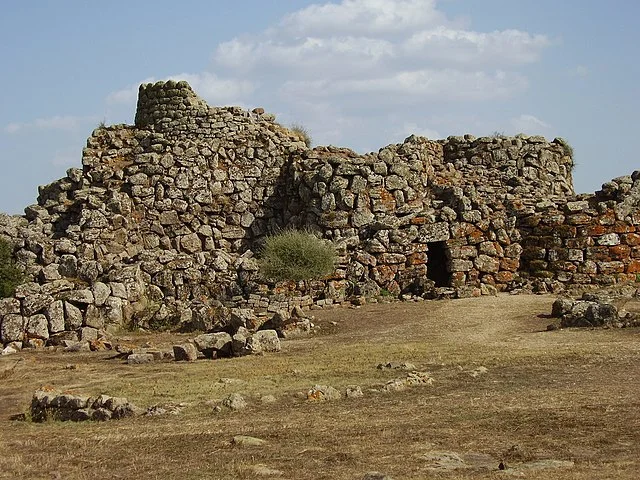
Archaeological work at Nuraghe Arrubiu began in the 20th century, leading to several significant discoveries. Excavations uncovered ceramics, bronze tools, and Mycenaean pottery fragments, suggesting active trade with mainland Europe and the Aegean. The presence of imported goods highlights the site’s strategic role in Sardinia’s economy and trade networks.
One of the most notable finds at Nuraghe Arrubiu is a betyl stone, which is likely linked to religious practices. Betyls, often associated with sacred stones in ancient Mediterranean religions, may indicate the tower’s role as a ritual site. Additionally, remains of animal bones suggest ceremonial offerings, further supporting this interpretation.
Nuraghe Arrubiu’s Role in the Nuragic Civilization
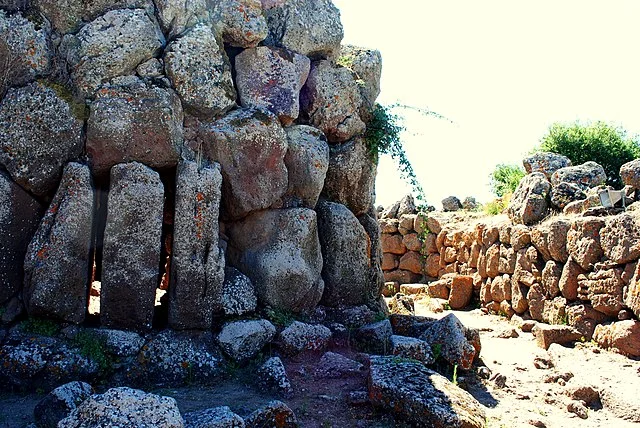
Nuraghe Arrubiu’s size, location, and construction detail suggest it held significant influence in the Nuragic world. While other nuraghes served smaller communities or families, Arrubiu appears to have functioned on a larger scale. Its imposing architecture and strategic location likely played a key role in local administration and defense.
Nuraghe Arrubiu may have also served as a focal point for religious activities. Some archaeologists argue that its central chamber and complex design align with ritualistic practices seen in other ancient cultures. Combined with evidence of offerings and religious symbols, this suggests Nuraghe Arrubiu was not solely a fortress but also a center for communal rituals and gatherings.
Preservation and Tourism
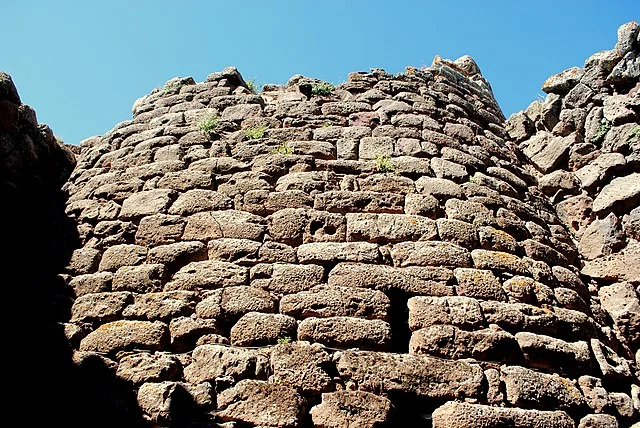
Today, Nuraghe Arrubiu is a well-preserved historical site open to the public. Sardinian authorities have implemented preservation efforts to prevent further erosion and maintain the structure’s integrity. Interpretive signs and guided tours help visitors understand the site’s history and the Nuragic civilization’s impact.
The surrounding area also holds archaeological interest, with several smaller nuraghes, tombs, and settlement remains. These sites provide additional insight into the daily lives and customs of Sardinia’s ancient inhabitants. Nuraghe Arrubiu remains one of the most visited nuraghes in Sardinia, attracting historians, archaeologists, and tourists interested in ancient Mediterranean cultures.
Conclusion
Nuraghe Arrubiu stands as a testament to the ingenuity of the Nuragic civilization. Its architectural complexity and historical significance offer valuable insights into Sardinia’s ancient past. As ongoing studies reveal more about the Nuragic people, Nuraghe Arrubiu continues to be a central piece in understanding the island’s role in prehistoric Europe.
Source:

